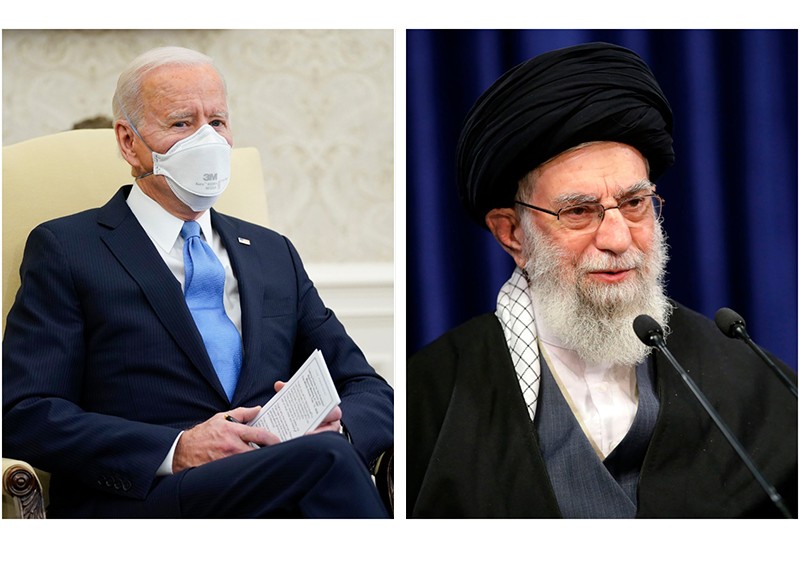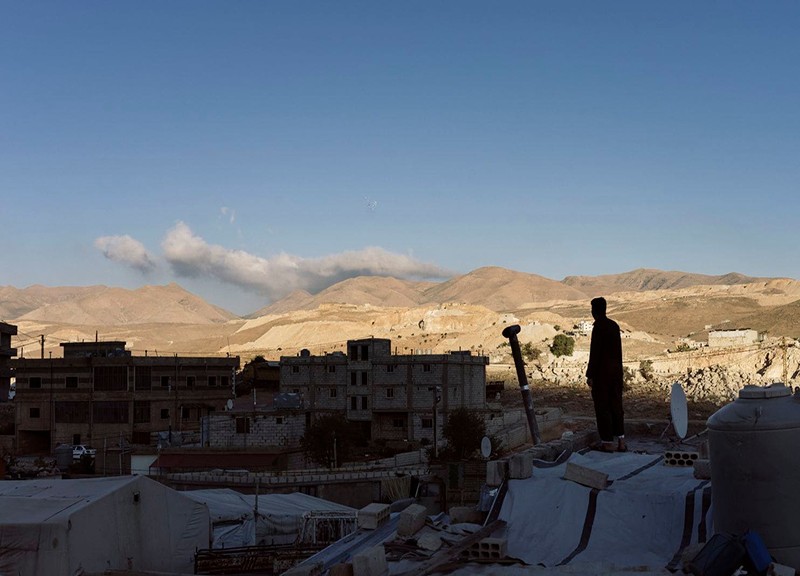
The American president wants to avoid escalation leading to war, but the decision isn’t his alone.
By Douglas London - WSJ
Hours after Kataib Hezbollah injured three American troops with an attack on an air base in Iraq on Dec. 25, the U.S. struck back, hitting three facilities used by the Iran-backed militia. U.S. officials described the act as a proportionate retaliation to deter further attacks and mitigate the risk of a full-scale war between the U.S. and Iran.
U.S. military officials say there have been 103 attacks against U.S. troops in Iraq and Syria since Oct. 17. Several Americans have been injured. The U.S. has retaliated half a dozen times against Iran’s Arab proxies in both countries. The math isn’t working for the Biden administration, and neither is time.
Iran relishes the idea that it is engaged in a David-vs.-Goliath struggle with the U.S. This plays well in the Islamic world and allows the ayatollahs to justify repression at home. At the moment, Iran is dictating the pace and scope of the conflict. The Biden administration, leery of escalation, has maintained a purely reactive military posture, giving Tehran’s decision makers the impression that a window is open during which they can attack U.S. forces with impunity. In the past, this dynamic has emboldened the mullahs to push the envelope.
President Biden mistakenly believes that restraint will prevent war. On the contrary, the U.S. must impose a real cost on Iran to deter further attacks. Hitting proxies is militarily ineffective—Monday’s strike will have no discernible effect on Kataib Hezbollah’s capabilities—and gives the mullahs fodder for their regional propaganda campaign. It allows the regime to paint itself as the standard-bearer of Islamic resistance against the American imperialists.
Better for the U.S. to play offense than defense. If Mr. Biden wants to avoid a larger war, he should consider how his decision-making would be limited by a single missile or drone that slips through U.S. defenses and kills American troops. The cable-news channels would eviscerate him and his policy of caution. Such pressure, particularly during a presidential campaign, would force his hand and likely trigger a spiral of reciprocal escalation.
This is all avoidable given U.S. military advantages. The key for Washington is to see the world through Iranian eyes. Since coming to power in 1979, Tehran’s revolutionary regime has adopted an asymmetrical approach in its conflict with the U.S. The mullahs see themselves as being at war with the Great Satan. Washington, on the other hand, views Tehran’s provocations as an occasional annoyance—a distraction from larger national-security and economic threats posed by China and Russia.
Iran’s leaders are aware of their disadvantages but have no interest in peaceful coexistence. They need to maintain conflict with the U.S. to legitimize their oppressive regime. Iran’s strategy therefore depends on understanding Washington’s red lines. Having worked the Iran portfolio as a Central Intelligence Agency operations officer for decades, I expect that every time U.S. officials announce Iran doesn’t want a direct war with the U.S., Tehran gives its proxies a green light to attack Americans and Israelis. When the U.S. throws its muscle around instead, Tehran reins in its network of regional militias.
This was aptly illustrated after the U.S. killed Islamic Revolutionary Guard Corps Quds Force Commander Qasem Soleimani in 2020. The U.S. demonstrated its willingness to commit an open act of war against a leader roughly equivalent to the U.S. chairman of the Joint Chiefs, national-security adviser and director of national intelligence. At the time, the U.S. had also significantly bolstered its military presence in the region with additional ships, aircraft and Marines. Iran fired more than a dozen ballistic missiles at U.S. bases across Iraq—missing each time, probably on purpose. The Iranian military pulled its punches rather than risk inviting a massive American military response.
The U.S. also must think asymmetrically, trying anything that might illuminate the ayatollahs’ weaknesses. Tehran’s leaders obsessively project an image of omniscience, control and power to ward off popular revolt. Now might be the time for the U.S. to consider visible but deniable cyberattacks that temporarily take out Iran’s power grid, banking, oil or port infrastructure. Cyber operations can similarly target Iran’s television and radio stations, using them to expose regime corruption. The ruling clerics have been willing to kill dissidents abroad for far less.
Washington should make clear its willingness to pursue more kinetic targets if Iran escalates. The U.S. already has the capacity to employ standoff weapons, such as sea- and air-fired cruise missiles, to destroy facilities producing Iranian drones and other armaments. Depending on Iran’s response, the U.S. could target IRGC platforms and facilities in the Gulf.
The U.S. needs to move quickly to change the status quo with Iran. Hope that our defensive capabilities will continue to limit casualties isn’t a viable strategy to avoid war. Iran is already at war and considers its proxies expendable. Tehran sees no value in restraint. Experience has taught the mullahs that there is political opportunity in provocation. Washington’s pusillanimity is, for them, an invitation to do more. U.S. officials are right that Iran’s leaders have no interest in a war they can’t win. The problem is that Washington is letting them fight the war they can.
Mr. London, a former CIA operations officer, is author of “The Recruiter: Spying and the Lost Art of American Intelligence.” He teaches intelligence studies at Georgetown University’s School of Foreign Service and is a nonresident scholar at the Middle East Institute.














